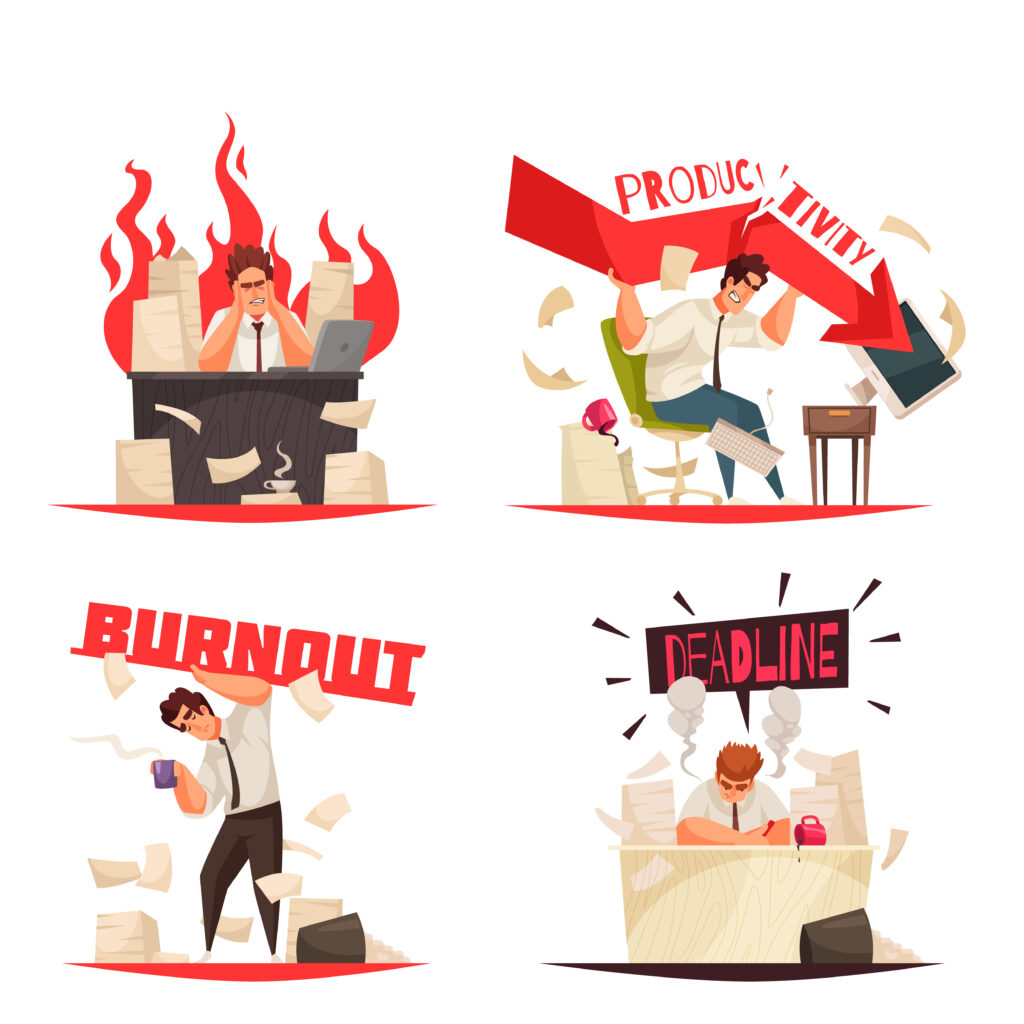Introduction
Running a business or managing a team comes with its own set of challenges, and one common obstacle that many organizations face is being understaffed. Being understaffed can create numerous difficulties, such as increased workloads, decreased productivity, and employee burnout. In this article, we will explore the impact of being understaffed and provide insights into managing this situation effectively.

Table of Contents
According to a survey conducted by the Society for Human Resource Management (SHRM), 69% of organizations reported being understaffed in the past year.
The American Psychological Association (APA) found that 60% of employees who experienced high levels of stress at work attributed it to understaffing and excessive workloads.
A study by Gallup revealed that companies with higher employee engagement levels had 21% higher productivity. Understaffing can negatively impact engagement levels, leading to decreased productivity.
The Bureau of Labor Statistics reported that the healthcare industry in the United States experienced a shortage of 1.1 million nurses in 2020, highlighting the significant impact of understaffing in critical sectors.
A survey conducted by CareerBuilder found that 45% of employers in the United States reported that being understaffed resulted in lower-quality work, affecting their ability to meet customer demands and deadlines.
A report by the National Restaurant Association indicated that 76% of restaurant operators considered staffing levels as the top challenge for their businesses, highlighting the pervasive nature of understaffing in the industry.
Effects of Being Understaffed
Increased Workloads and Stress
When a team is understaffed, the workload is distributed among a smaller number of employees, resulting in increased pressure and stress. Employees may find themselves juggling multiple responsibilities and struggling to meet deadlines. This can have a detrimental effect on their well-being, leading to decreased job satisfaction and potential burnout.
This can be better understood through a study by HBR mentioned in the below video:
Decreased Productivity and Quality
Understaffing often leads to a decline in productivity and the quality of work. When employees are overwhelmed with excessive tasks, they may not have sufficient time or energy to devote to each assignment. As a result, the overall output and quality of deliverables may suffer, affecting the organization’s reputation and customer satisfaction.
Employee Burnout and High Turnover Rates
Extended periods of understaffing can contribute to employee burnout, which is characterized by exhaustion, cynicism, and a decrease in job performance. Burnout can lead to higher turnover rates as employees seek opportunities elsewhere to escape the overwhelming work environment. This can be costly for businesses in terms of recruitment, training, and lost expertise.
The Causes of Being Understaffed
Limited Budget and Hiring Constraints
One of the main causes of understaffing is limited financial resources and hiring constraints. Organizations may face budgetary restrictions that prevent them from hiring additional staff members, despite the growing workload. Additionally, the recruitment process itself can be time-consuming and challenging, resulting in delayed hiring decisions.
Rapid Business Growth and Expansion
Another factor that contributes to being understaffed is rapid business growth and expansion. As companies experience increased demand for their products or services, the workload naturally increases. However, hiring new employees to meet this demand may take time, leaving the existing workforce stretched thin in the meantime.
Unexpected Absences and Resignations
Unforeseen circumstances, such as employee absences due to illness, family emergencies, or resignations, can also lead to understaffing. These unexpected gaps in the workforce can disrupt productivity and strain the remaining team members, who must pick up the slack.
The concept of Quiet Quitting burnout is also making headlines these days. You can read the complete article about it here or by following the mentioned link:
Strategies for Managing Understaffing
Prioritizing Tasks and Workload Distribution
To effectively manage understaffing, it is crucial to prioritize tasks and distribute workloads strategically. Identify critical and time-sensitive projects, and allocate resources accordingly. This ensures that the most important assignments receive adequate attention and resources, reducing the risk of missed deadlines and subpar results.
Streamlining Processes and Embracing Automation
Streamlining processes and leveraging automation tools can help alleviate the burden on an understaffed team. Identify repetitive and time-consuming tasks that can be automated, freeing up valuable time for employees to focus on more complex and strategic initiatives. Automation can improve efficiency, minimize errors, and boost overall productivity.
Temporary Staffing Solutions and Outsourcing
Consider temporary staffing solutions or outsourcing certain tasks to external service providers. Temporary employees can fill immediate gaps in the workforce, while outsourcing can help alleviate the workload on internal resources. These solutions provide flexibility and allow the organization to manage peak periods without overburdening existing employees.
Employee Training and Skill Development
Investing in employee training and skill development is crucial when managing understaffing. By enhancing the skills and knowledge of existing team members, they can become more efficient and effective in their roles. Training programs can empower employees to handle additional responsibilities, reducing the strain caused by understaffing.
Open Dialogue with Employees
Maintaining open communication with employees is vital during times of understaffing. Regularly check in with team members to understand their challenges, provide support, and address any concerns they may have. Encourage open dialogue to foster a sense of trust and ensure that everyone feels heard and valued.
Clear Expectations and Goal Setting
Set clear expectations and goals for employees to manage workload expectations effectively. Clearly communicate priorities, deadlines, and performance metrics to ensure that everyone is on the same page. This clarity helps employees understand what is expected of them and allows for more efficient planning and execution.
Recognizing and Rewarding Employee Efforts
In an understaffed environment, it is essential to recognize and reward employee efforts. Acknowledge their hard work, dedication, and ability to perform under pressure. Celebrate milestones and achievements, both individually and as a team. Recognizing and appreciating employees’ contributions can boost morale and motivation, fostering a positive work environment.
Preventing Understaffing in the Future
Effective Workforce Planning
To prevent understaffing in the future, effective workforce planning is crucial. Regularly assess the current and projected workload, and anticipate staffing needs accordingly. Proactively identify potential gaps and develop recruitment strategies or contingency plans to address them before they become a problem.
Proactive Recruitment and Talent Acquisition
Maintain a proactive approach to recruitment and talent acquisition. Continuously network, build relationships with potential candidates, and keep an updated pool of talent. By actively seeking qualified individuals, you can reduce the time between identifying the need for new hires and bringing them onboard.
Building a Positive Work Culture
Creating a positive work culture is vital for attracting and retaining top talent. Foster a supportive environment that values work-life balance, employee well-being, and personal growth. A positive work culture enhances employee satisfaction, reduces turnover rates, and makes it easier to recruit new team members.
Conclusion
Being understaffed poses numerous challenges for organizations, ranging from increased workloads and stress to decreased productivity and employee burnout. By understanding the effects of understaffing, implementing effective management strategies, fostering communication, and adopting proactive measures, businesses can mitigate the negative impacts and create a resilient and successful workforce.
FAQs
Q1: How can understaffing affect employee morale?
Understaffing can lead to increased workloads, stress, and burnout, which can significantly impact employee morale. When employees feel overwhelmed and overworked, their job satisfaction and motivation decrease, resulting in a negative effect on morale.
Q2: What are the long-term consequences of being understaffed?
Extended periods of understaffing can have various long-term consequences, such as decreased productivity, compromised quality of work, high turnover rates, and reputational damage. It can also hinder the organization’s ability to grow and meet customer demands effectively.
Q3: How can automation help manage understaffing?
Automation can help manage understaffing by streamlining processes, reducing manual and repetitive tasks, and improving overall efficiency. By automating certain activities, employees can focus on more complex and strategic work, making the most of the available resources.
Q4: What steps can organizations take to prevent understaffing?
Organizations can prevent understaffing by engaging in effective workforce planning, proactive recruitment, and talent acquisition. By anticipating staffing needs, maintaining a talent pipeline, and building a positive work culture, businesses can reduce the risk of understaffing in the future.

